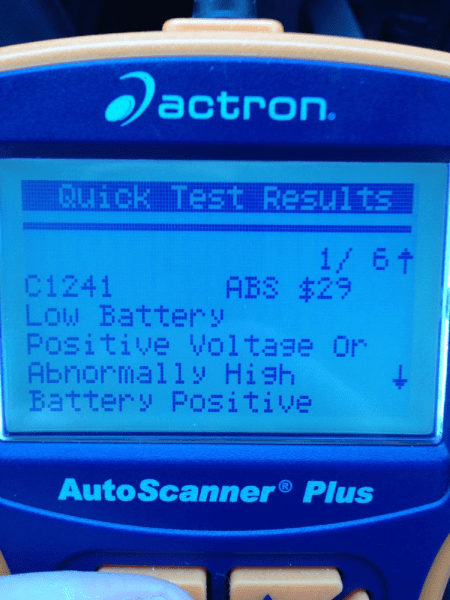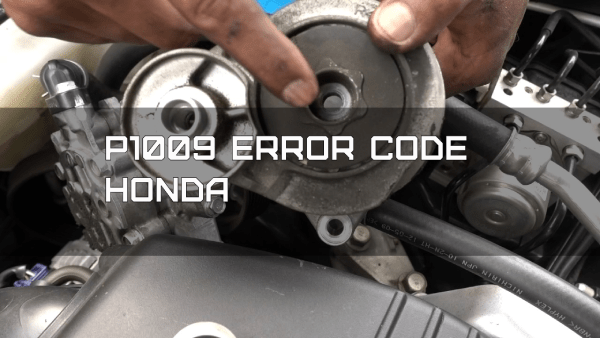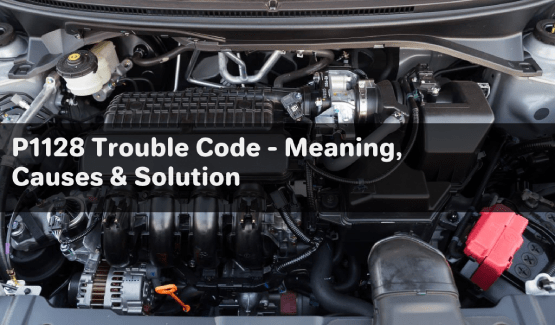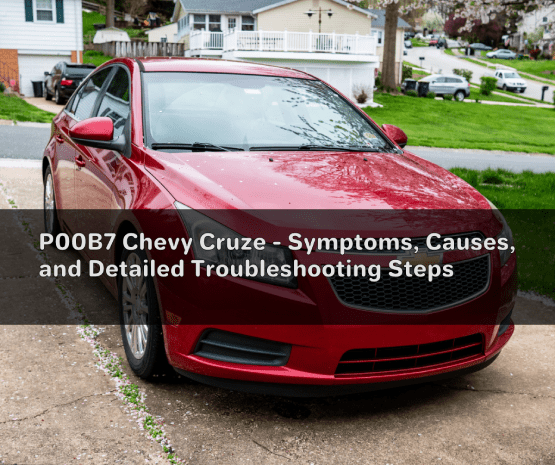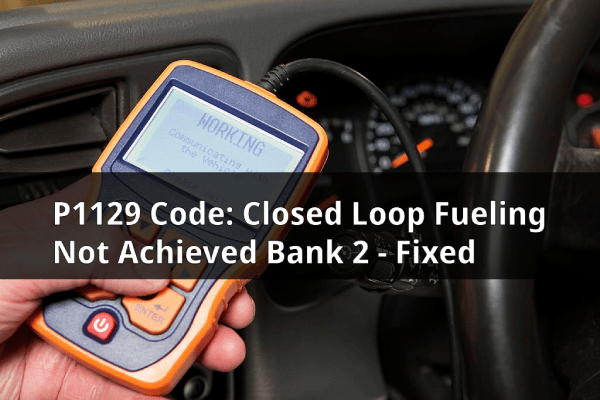As this code is related to the vehicle’s battery pack, it is important to have a basic understanding of how the batteries of a Prius work. The hybrid batteries of a Prius are made from nickel. A battery pack consists of multiple packs connected via cables or connectors. Eight (1.2-volt) cells connected in series make up a standard hybrid battery. Up to 28 modules are needed to construct a standard hybrid battery pack.
The P0A80 (Replace Hybrid/EV Battery Pack), a common diagnostic problem code (DTC) for hybrid vehicles like the Toyota Prius, is a powertrain code. When this error message appears, it indicates that the hybrid battery management system (HVBMS) has encountered an issue, most likely due to a weak cell failure in the hybrid battery pack.
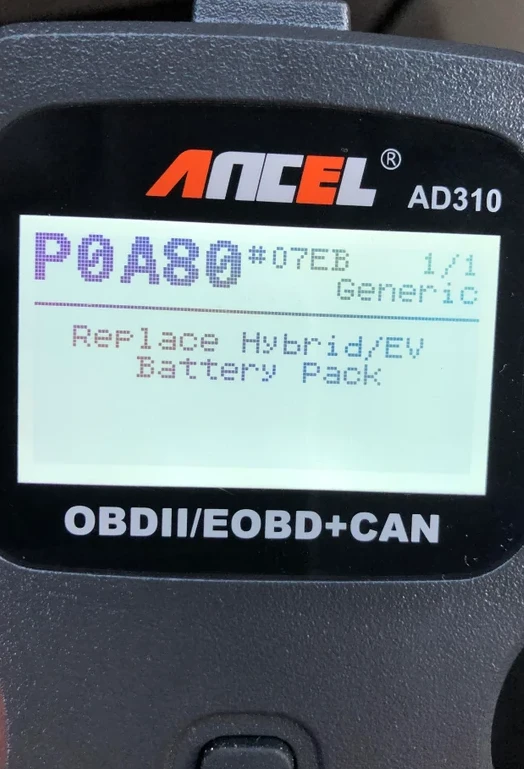
A fault with the hybrid vehicle battery management system (HVBMS) failure will result in a P0A80 Prius error, and sometimes even the red triangle will be displayed on the instrument cluster. Moreover, it keeps tabs on the condition of the battery pack. The HVBMS and PCM (Powertrain Control Module) monitor each cell’s resistance, voltage, and temperature.
Here’s How The Hybrid System Works
The HVBMS and PCM monitor the battery pack’s state and the desired charging level in addition to the resistance of individual cells, battery voltage, and battery temperature.
There are numerous ammeters and temperature sensors built into the battery pack, within each battery cell. This information is then used by HVBMS, which compares voltage signals to determine whether or not discrepancies exist and takes corrective action if necessary.
To detect and respond to voltage signal irregularities, the HVBMS analyzes each voltage signal independently. Battery health and charge status information is forwarded to the PCM from the HVBMS via the controller area network (CAN). The PCM will store a P0A80 code, and the malfunction indicator bulb may light up if the HVBMS sends an input signal reflecting uneven battery or cell temperature and voltage (resistance).
There are three main types of hybrid car batteries:
- nickel-cadmium (Nicad).
- nickel metal hydride (NiMH)
- and lithium-ion (Li-Ion)
The battery pack in the second-generation Toyota Prius is constructed from 38 Panasonic prismatic nickel metal hydride modules, each containing six 1.2-volt cells. Compared to the 228 cells within 38 modules found in the first-generation Prius, the second generation has only 168. The battery pack is stashed away behind the second bench seat.
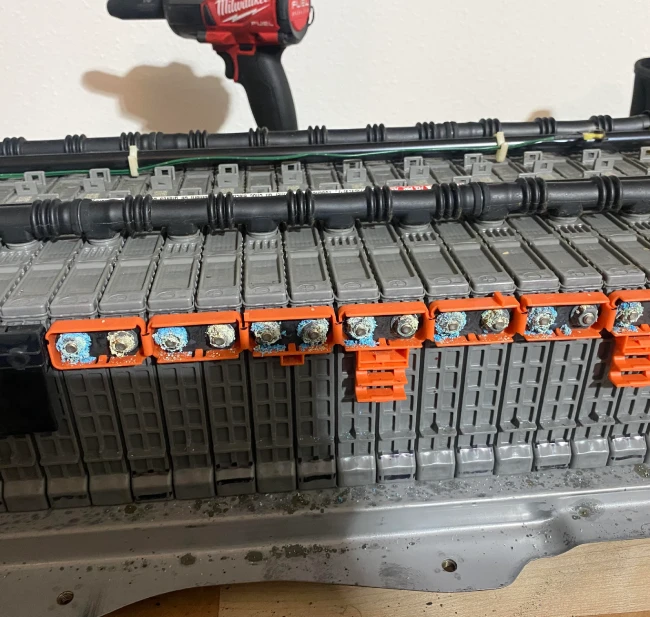
The entire battery pack weighs in at a hefty 53.3 kilograms. Approximately 20 kW is the discharge power capacity of the Prius pack at 50 percent state of charge. The power output grows in proportion to the temperature, falling as the temperature drops. Prius’s computer is solely responsible for ensuring the battery is always at the right temperature and has a full charge.
The Prius’s batteries are kept at an optimal temperature with air conditioning from the vehicle’s interior, which serves as thermal management. Above the rear driver’s tire well, a 12-volt car is installed to draw fresh air into the vehicle.
Related Content: What Does The Code P3000 Indicate On a Toyota Prius?
What Are The Possible Causes of A P0A80?
- Defective hybrid battery, cell, or battery pack
- HVBMS sensor failure
- Individual cell resistance is excessive
- Discrepancies in cell voltage or temperature
- Hybrid battery pack fans not working properly
- Loose, broken, or corroded battery life connectors or cables
How Can I Fix the P0A80 DTC?
Any time the BMS (battery monitoring system) detects a voltage difference of 20% or more between the battery blocks, the P0A80 will be triggered. When the P0A80 error message appears, one of the car’s 28 modules will likely malfunction again if the battery isn’t replaced or refurbished. In some cases, a garage may repair the faulty component and send you on your way, only for the same thing to happen again in a month or two.
In the long run, a permanent solution that will cost more is to replace the complete battery pack rather than just the defective module. In this case, all cells must be replaced with ones that have been cycled, tested, and measured similarly.
Related Prius Content: What Are the Causes of the Prius P lock Malfunction?
How Do You Troubleshoot P0A80
Hybrid batteries are dangerous and should only be worked on by trained professionals.
A bad hybrid battery is a likely culprit if the vehicle in issue has more than 100,000 miles on it.
A weakened or corroded connection is likely to blame if the car has fewer than 100,000 miles on the odometer. There is a chance that the hybrid battery pack won’t be reliable after being repaired or refurbished. The original equipment manufacturer component should be swapped out to troubleshoot a hybrid battery safely. A pre-owned hybrid battery pack may be an option if the cost is too high.
Code P0A80 requires a diagnostic scanner, digital volt/ohmmeter (DVOM), and high voltage battery diagnostic source for analysis. After acquiring test protocols and specifications from the hybrid motor information source, use the scanner to keep tabs on charging data for your hybrid batteries. A proper diagnosis will be facilitated by the availability of component layouts, wiring schematics, connection faces, and connector pinouts.
Make sure there is no corrosion or open circuits by visually inspecting the hybrid battery and all other circuits. Cleaning up rust and fixing broken parts as needed.
Clear the codes and put the vehicle through its paces to determine if the P0A80 has been reset after connecting the scanner to the vehicle’s diagnostic port and recovering all saved codes and the related frozen frame data. To see if the PCM will enter preparedness mode or if the code will be removed, give it a test drive. Once the error message disappears, you can use the scanner to figure out which cells in your hybrid battery aren’t a good fit. Make a note of the cells and keep diagnosing.
With the scanner’s freeze frame data in hand, you can figure out whether an open circuit, excessive cell/circuit resistance or a temperature mismatch in the hybrid battery pack is to blame for the P0A80’s persistence. Follow the testing procedures and manufacturer guidelines for validating the HVBMS (temperature and voltage) sensors. If your sensors don’t perform to factory standards, you should replace them.
The DVOM can be used to examine the resistance of individual cells. If the resistance of individual cells is within acceptable ranges, you can test the bus connectors and cables using the DVOM. Though swapping out individual cells or batteries is possible, a brand-new set of high-voltage batteries would be the most stable option. The hybrid battery charging system may be rendered inoperable if the underlying causes of the stored P0A80 code persist.
Related Prius Content: Why does my Toyota say Maintenance Required (MAINT REQD)?
Is It Safe To Drive With a P0A80 Code?
Prius is one example of a vehicle that uses a parallel system to function. As a result, the two forms of energy are complementary rather than mutually dependent. If your Prius’s battery dies, you can still drive it on gasoline, but it will be underpowered and jerky. Keep your speed low and turn off the air conditioning if you have to utilize this option, but only if you’re headed to a safe place or a service station.
You may also have trouble getting the gas engine started if you don’t have the 12v battery charged and ready to go. Still, it’s recommended that you swap out the battery as soon as possible. If your high-voltage battery dies, your car won’t start or function properly. The performance of your car will suffer if the high-voltage battery isn’t working properly or hasn’t been fully charged. If you know the warning symptoms of a dying battery, you can replace it before it completely dies.
Several of these symptoms include:
- Reduced fuel efficiency
- Inability to maintain a charge properly
- Weird engine sounds
- A battery-powered fan that spins nonstop (which means your battery is getting too hot, and the fan needs to keep cooling it off)
Please get a new or refurbished high-voltage battery from a reliable supplier and install it before the old one gives out on you.
How Much Does It Cost To Fix?
A diagnosis by a mechanic will set you back an hour of their time. The price you’ll pay for a mechanic’s time will be between $75 and $150, though this price can vary depending on where you live.
A new hybrid battery is a significant investment. A new hybrid battery for a Prius can cost as much as $3,200; if you’ve had your car for a while, it may be worth less.
Related Prius Content: B2799 Toyota DTC: Meaning, Causes & Solutions
Can You Replace Your Prius Hybrid Yourself?
For many reasons, replacing a battery for your Toyota Prius hybrid by yourself is not a good idea. To begin with, it poses a high risk of harm to anyone involved. Because of the high voltage involved, you should not attempt this repair without the proper training and experience.
In addition, it’s not a good idea to attempt the replacement without obtaining the appropriate diagnostic tools. Plus, if something catastrophic happens, your Prius could be wrecked, which would be a significant financial setback. It’s probably not worth risking the damage that could occur to save money on labor.
The knowledge required to perform such a task is well beyond the capabilities of a casual DIY-er. My recommendation is to go to a specialist and pay for the labor.
Every since I was a little boy, I can remember spending the afternoons in my dad’s repair shop. I got my first car at 16 and it was the best feeling ever!
I have contributed to various automotive publications but decided it’s finally time to settle for something constant.

